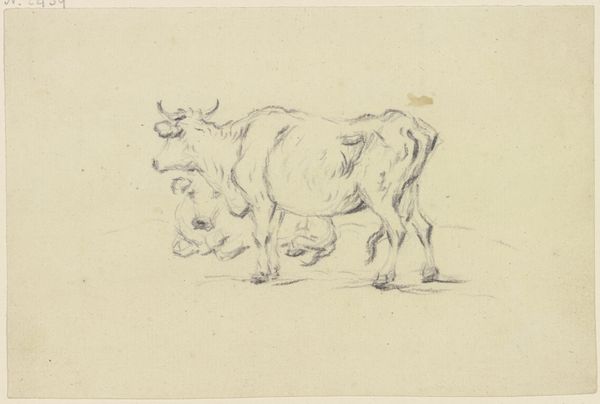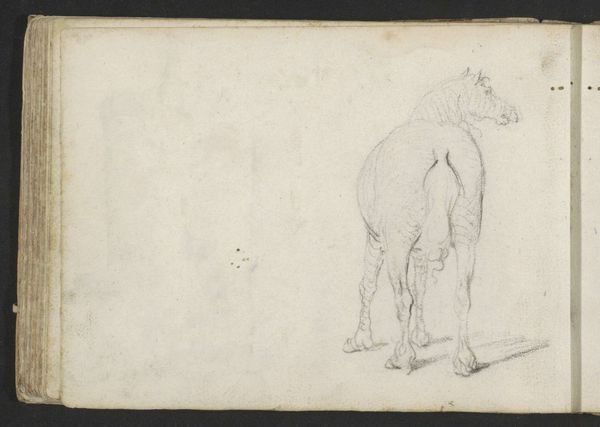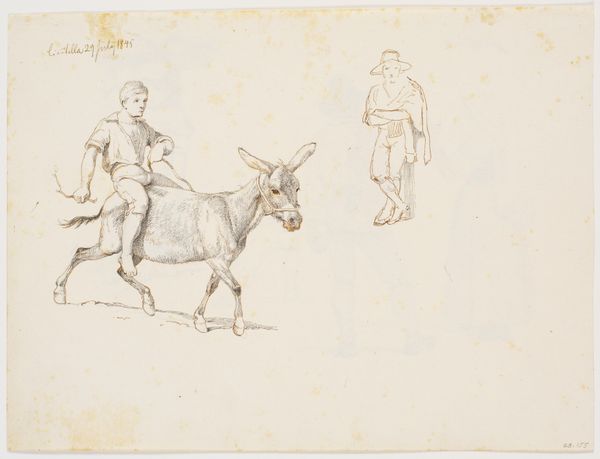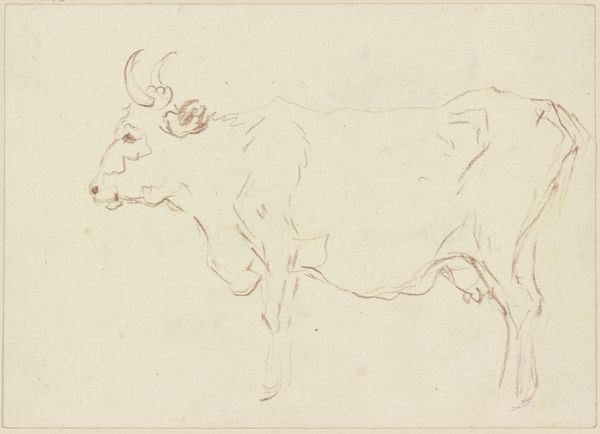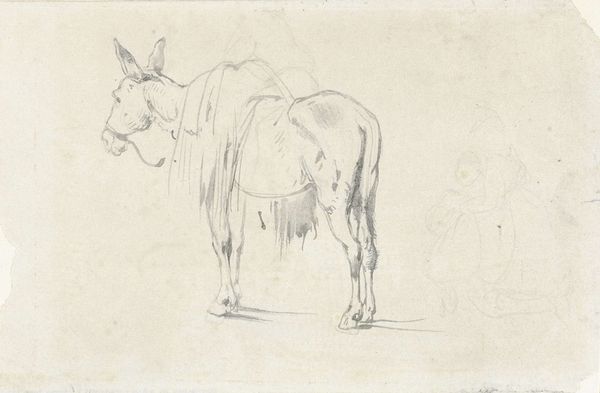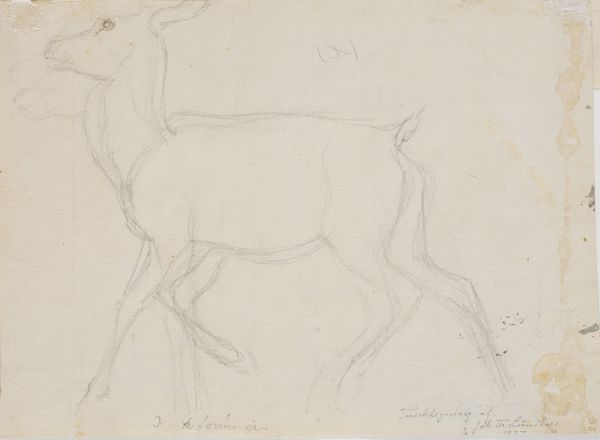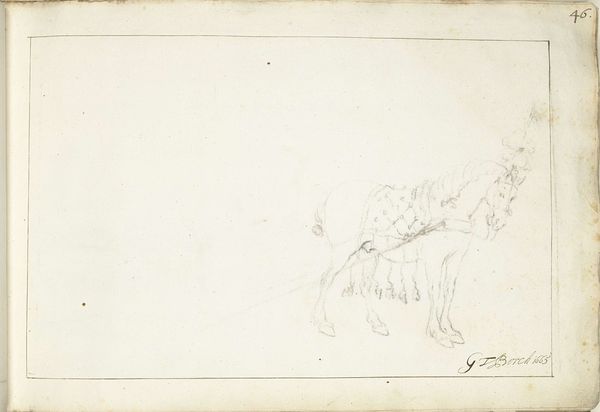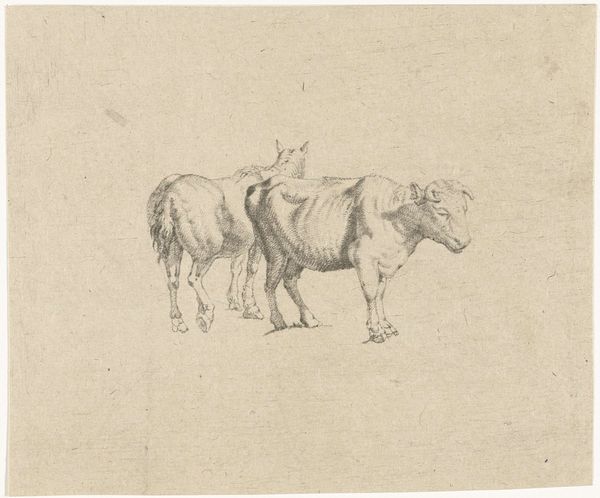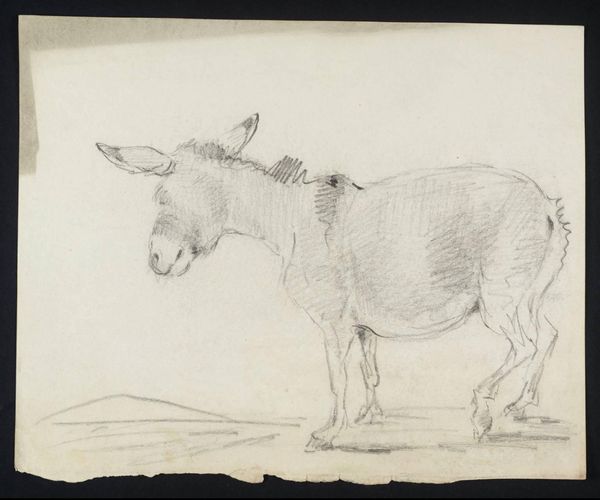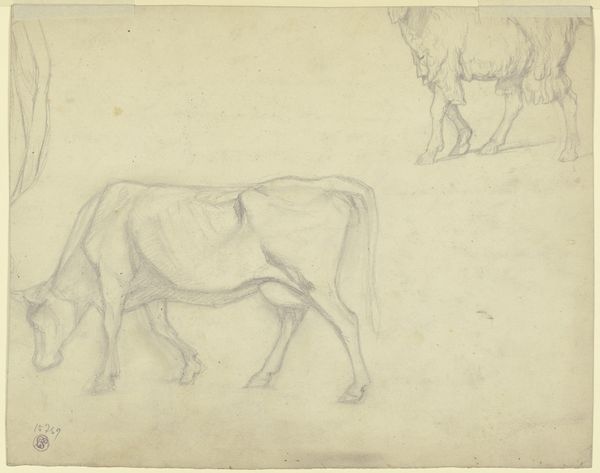
drawing, print, paper, pencil, graphite
#
drawing
# print
#
pencil sketch
#
landscape
#
figuration
#
paper
#
romanticism
#
pencil
#
graphite
#
realism
Dimensions: 222 × 282 mm
Copyright: Public Domain
Curator: Before us, we have Théodore Géricault's "Draught Horse," created sometime between 1818 and 1819. It’s a pencil and graphite drawing on paper. It now resides here at the Art Institute of Chicago. Editor: My initial impression is one of weariness. The horse stands passively, head slightly bowed. The lightness of the pencil strokes lends a fragile quality to the animal, despite its implied strength. Curator: That's astute. Géricault, known for his Romantic leanings, was fascinated by horses – both their physical power and symbolic weight within 19th-century French society. Consider the era – the horse was crucial for agriculture, transportation, and, of course, warfare. It represents labor, but also social status and military might. Editor: The harness is particularly striking. It binds the animal, undeniably linking it to service and human control. In many cultures, the horse is seen as a symbol of freedom and virility, but here, that symbolism is clearly curtailed. Could the bowed head signify something more, perhaps a subtle form of resistance, or a tragic understanding of its own subdued existence? Curator: Perhaps. Or perhaps it reflects Géricault’s wider interest in the working class and the burdens they carried, often invisibly. He had an intense awareness of the societal structures that controlled and directed life, portraying their daily struggles. Note the minimal background - it forces us to confront the animal directly. Editor: The sketch-like quality is fascinating, too. It lacks the dramatic flourish you might expect, choosing instead to observe. This immediacy captures a fleeting moment, almost as if Géricault is reminding us of the ephemerality of existence and the transient nature of power, in its varied forms. Curator: And perhaps gesturing towards broader Romanticism, in which truth and beauty are rooted not in some static ideal but in capturing the truth of the moment and our perception of it. It also might express the anxiety of the post-Napoleonic era; anxieties about order, class and future power structures. Editor: Thinking about those power dynamics, seeing the drawing evokes thoughts of so many symbolic layers… it's like a subdued epic, where a single animal bears the weight of history on its withers. Curator: Precisely. Géricault captured something profound in what seems, on the surface, like a simple study. A convergence of aesthetic ideals, class tensions, and rapidly transforming cultural values are subtly revealed here.
Comments
No comments
Be the first to comment and join the conversation on the ultimate creative platform.
